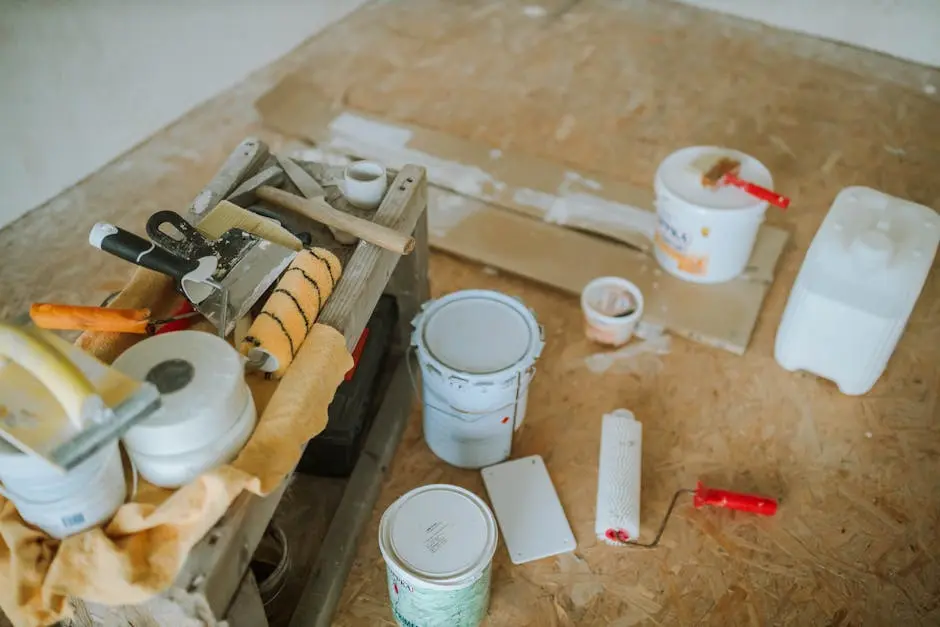When it comes to home maintenance, siding repair can seem daunting and often expensive. However, there are numerous cost-effective solutions that allow homeowners to tackle siding issues without breaking the bank. In this guide, we’ll explore a variety of easy, budget-friendly repair methods that can restore your home’s exterior and enhance its curb appeal. Let’s dive into these handy solutions!
1. Identify the Types of Siding Damage
Before you jump into any siding repair project, it’s crucial to identify the specific types of damage you might be dealing with. Siding can sustain many issues, ranging from minor cracks to major water damage. By taking the time to assess the condition of your siding thoroughly, you can create a more targeted repair plan that will save both time and money in the long run. Look for signs like fading paint, rot, or even loose panels which might indicate that it’s time for some repair work.
Furthermore, being aware of the material used for your siding can guide your repair decisions. For example, vinyl siding may have different issues compared to wood or fiber cement siding. Each type of siding has its own quirks and traits, so understanding these can help you choose the right repair method. Be diligent with inspections, and note down the type of damage to formulate an effective repair strategy.
2. Embrace Temporary Fixes with Duct Tape
Duct tape is more than just a quick fix; it can be your best friend in emergencies. If you notice a small crack or a loose piece of siding, applying duct tape as a temporary measure can help keep the problem from worsening until you’re able to make a more permanent repair. It’s a simple yet effective approach that any homeowner can implement. Just ensure that the tape is applied neatly to keep your home’s exterior looking tidy.
Moreover, duct tape can also be utilized to seal gaps that might lead to water intrusion, preventing potential mold or water damage. Remember, this solution is temporary; ideally, you’ll want to schedule a more substantive repair soon after. Using duct tape allows you to take immediate action while buying you some time to plan for the proper repairs without the stress of a gaping hole in your siding.
3. Use Paint to Refresh Worn Siding
One of the most budget-friendly ways to improve the appearance of your siding is through the power of paint. A fresh coat of paint can do wonders to refresh worn or faded siding, giving your home a bright and inviting look without the need for expensive new materials. When choosing paint, be sure to select a type that’s specifically formulated for exterior surfaces to withstand harsh weather conditions. Not only can paint enhance your home’s curb appeal, but it can also provide an added layer of protection against the elements.
Before you start painting, take a few moments to prep the surface. Clean off any grime, debris, or peeling paint, as a well-prepped surface is key to ensuring your new paint adheres properly and lasts longer. Depending on the original color and the new shade, you may even need to apply a primer. After these preparations, you can unleash your creativity. Whether you opt for a bold color change or a subtle refresh, painting can be a rewarding and enjoyable project.
4. Repair Cracks with Caulk
Caulking is a simple yet effective solution for repairing cracks in your siding. This material is great for sealing gaps and preventing moisture from seeping into your home’s structure, which can lead to costly repairs down the line. Before you begin, make sure to choose a high-quality, paintable caulk that is suited for exterior use. Most caulks come in a tube and can be applied easily with a caulk gun, making this a straightforward project even for novice DIYers.
Once you’ve cleaned the area around the crack and applied the caulk, smooth it out with your finger or a tool to create a neat finish. After the caulk dries, consider painting over it to match your existing siding. This not only helps with aesthetics, it also provides an additional barrier against the elements, ensuring your repairs stand the test of time. Keep in mind that regular inspections can help you catch new cracks early, allowing for timely repairs that will save you money in the long run.
5. Replace Missing Shingles or Panels
Noticing that shingles or panels are missing is often alarming, but don’t worry—this is a repair that’s typically easy to manage. The first step is to identify the type and style of siding you have, so that you can find an appropriate replacement. Many home improvement stores carry a range of siding materials, or you might opt to check local salvage yards for matching materials. Replacing missing components not only improves the visual appeal of your home but also prevents water damage and other complications.
Before replacing shingles or panels, ensure that any underlying issues—such as rot or pests—are addressed. Once you’ve secured the new siding, use a pry bar to carefully remove the old, damaged sections. Then, simply nail or screw the new pieces into place. This repair can enhance your siding’s structural integrity, ultimately extending its lifespan. Plus, it’s an opportunity to inspect the condition of the rest of your siding, allowing you to catch potential problems before they escalate.
6. Install a New Layer of Vinyl Siding
If your existing siding is significantly weathered or damaged, adding a new layer of vinyl siding can be a sound investment. This method not only improves the aesthetic of your home but also adds an extra layer of insulation, helping you save on energy bills. The process begins with removing any deteriorating pieces then ensuring the underlying structure is sound and clean. When installing the new vinyl layer, proper alignment is crucial for both appearance and functionality.
New vinyl siding is available in various colors and textures, allowing homeowners to personalize their decor while enhancing durability. Opting for vinyl presents a lower maintenance solution compared to wood or painted materials since it resists fading and only requires occasional washing. With careful installation, you could drastically improve your home’s look and feel, making it an investment worth considering. Even though it may seem like a more expansive project, the long-term benefits often outweigh the upfront costs.
7. Utilize Siding Sealant for Extra Protection
Applying a siding sealant can be a smart preventive measure to protect your home from moisture damage. These sealants create a barrier against the elements, helping to protect against water infiltration that could lead to rot and mildew. Before applying sealant, make sure that your siding is clean and dry to ensure maximum adhesion. This step may require some effort, but it’s a vital part of maintaining the integrity of your siding.
After preparation, apply the sealant according to the manufacturer’s instructions, allowing it to dry thoroughly. Many sealants can last for several years, making this a wise investment for long-term protection. By taking this proactive approach, you’re not just enhancing your home’s longevity; you’re also preserving its aesthetic appeal. Homeowners who regularly apply sealants can often avoid more extensive and costly repairs down the line, ensuring their siding remains in great condition for many years.
8. Consider Siding Replacement Options
If your siding is old or has extensive damage, it might be time to consider replacing it entirely. While this can feel like a daunting decision, knowing that many modern options offer better durability and lower maintenance can provide some peace of mind. Whether you opt for wood, vinyl, fiber cement, or composite materials, each option has its own set of benefits that can improve your home’s efficiency and aesthetics.
Moreover, when selecting new siding, consider how each type performs against the elements in your specific climate. For instance, fiber cement is known for its resilience against extreme weather, whereas vinyl siding can be easier to install and maintain. Beyond material, think about aesthetics and how the siding will complete your home’s overall look. Researching your options and weighing the pros and cons of each can guide you toward a smart investment for your home’s exterior.
9. Repair Wood Siding with Epoxy Solutions
Wood siding, while beautiful, can face issues like rot and insect damage. Luckily, epoxy solutions can be a lifesaver, especially for small damages. Epoxy repair products help fill in gaps and strengthen weakened areas, allowing you to maintain your wood siding without needing full board replacements. Start by thoroughly cleaning and drying the damaged area, then apply the epoxy according to the instructions, which typically involves mixing the product and using a putty knife for application.
Once the epoxy has cured—usually within a few hours—smooth it down to match the surrounding area. After sanding, it’s wise to paint over the repair to protect it from future damage and to improve the overall appearance. This method not only adds life to your wood siding but also enhances its resistance to moisture. Regular inspections of your wood siding, coupled with the use of epoxy, can significantly prolong its life and maintain the charm that wood brings to your home.
10. Explore DIY Fiber Cement Siding Repairs
If fiber cement siding has taken a hit, don’t worry—you can tackle repairs with some DIY skills. This type of siding is designed to endure the elements, but over time, it might chip or crack. Fortunately, small repairs generally don’t require professional help. Start with assessing the damage and purchasing a fiber cement repair kit from your local home improvement store. These kits typically include filler, sandpaper, and touch-up paint, making the process straightforward.
Prep the area around the damage, applying the filler according to the instructions, and mastering the sanding technique will restore the smooth look of your siding. Once sanded, you can paint over the repair to match your existing siding, creating a seamless finish. Regular maintenance checks can also help keep your fiber cement siding in excellent condition, allowing you to address minor damages before they become larger issues.
11. Upgrade to Composite Siding for Longevity
If your current siding is nearing the end of its lifespan, consider upgrading to composite siding. This type of siding is designed to be long-lasting and requires minimal maintenance compared to traditional materials. Composed of various synthetic materials, composite siding resists weathering, fading, and warping, making it a durable choice for homeowners. Though the initial investment may be higher, the longevity and low upkeep can save you money in the long run.
Moreover, composite siding is available in a range of styles and colors, allowing you to maintain aesthetic flexibility while enhancing your home’s efficiency. Installation can be done with basic tools, but consider hiring a professional for optimal results. Choosing composite siding can ultimately improve your home’s curb appeal while providing a reliable defense against the elements, making it a smart choice for any homeowner.
12. Leverage Community Resources for Support
When you tackle siding repair, remember you don’t have to do it alone. Local community resources can be a fantastic support system. From community workshops to online forums, there’s a wealth of knowledge at your fingertips. Many local hardware stores or home improvement centers offer free or low-cost workshops where you can learn repair techniques, tools to use, and general maintenance tips. Taking advantage of these resources can amplify your confidence in handling your own repairs.
Additionally, connecting with neighbors or local DIY enthusiasts can be a source of inspiration. Sharing experiences and learning from each other can benefit everyone involved. Many times, you might find someone willing to lend tools or provide guidance on tricky repairs. By leveraging these community resources, you can expand your skills while forming bonds within your neighborhood—ultimately making home improvement a more enjoyable endeavor.
13. Gather Tools for a Seamless Repair Process
Successful siding repair begins with having the right tools at your disposal. Ensure you gather everything you might need, including a pry bar, caulk gun, paintbrushes, and safety gear. Depending on your specific repair tasks, you might also require specialized items like a circular saw or a siding installation tool. Investing in high-quality tools can save you time and frustration, creating a smoother repair process.
Moreover, a well-organized workspace can greatly enhance your efficiency. Keep your tools easily accessible and set up your materials in a way that minimizes movement around your workspace. Fostering an organized environment helps you stay focused on the task at hand. Additionally, have a checklist of the necessary tools and steps for your repairs to ensure you’re well-prepared and can tackle your siding fix without any unnecessary hiccups.
14. Consult Online Tutorials for Guidance
In today’s digital age, online tutorials are an invaluable resource for anyone tackling repairs. With countless video guides and articles available, you can find step-by-step instructions tailored to your specific siding issues. By searching for specific problems, you can access detailed explanations and tips that can simplify complex repair tasks, making it easier to understand what needs to be done.
Many experienced DIYers and professionals share their insights, which can act as a source of inspiration or reassurance. Furthermore, these tutorials often cover common problems and FAQ’s, helping you avoid mistakes that others have made. Investing a little time in research before jumping into repairs can enhance not only your skills but also your overall confidence in handling siding issues effectively.
15. Join Local Home Improvement Workshops
Participating in local home improvement workshops can substantially elevate your repair skills. These workshops often provide hands-on experiences, allowing you to learn alongside others while practicing techniques under the guidance of experienced instructors. Whether you’re learning about siding installation or mastering repair methods, these sessions can make the process more approachable and less intimidating.
Additionally, networking with fellow attendees can lead to ongoing support and camaraderie as you all embark on your home improvement journeys. Local workshops often foster a sense of community, providing an opportunity to share resources, advice, and personal experiences. By investing your time into these workshops, you can gain not only knowledge but friendships that make home upkeep a more enjoyable process.
16. Document Your Repairs for Future Reference
Keeping a record of your repairs can be beneficial in several ways. By documenting what repair methods you implemented and any challenges you faced, you can create a resource for future projects. Plus, having a log of your repairs allows you to track the maintenance history of your home, which can be helpful when selling or refinancing. It shows potential buyers that you’ve taken good care of the property’s exterior.
Consider taking before-and-after pictures to illustrate the changes made. This way, you can visually appreciate your hard work and see how far you’ve come in maintaining your home. A written account might also include details on the products used, tips gathered from online tutorials, or personal notes on what worked well. As a result, this documentation can serve as a personalized reference guide that empowers you to tackle future repairs with confidence.
17. Invest in Preventative Measures
Prevention is always better than cure, especially when it comes to your home’s siding. Investing in preventative measures such as regular inspections and maintenance can save you from costly repairs down the line. Schedule seasonal checks to identify early signs of damage—like cracks, peeling paint, or rot—and address them before they turn into significant issues.
Applying protective sealants and ensuring proper drainage around your home can also help extend the lifespan of your siding. Make it a habit to clean your siding regularly to remove dirt, mold, and mildew, which can deteriorate the material over time. By being proactive and addressing minor issues as they arise, not only will you maintain the appearance of your home, but you’ll also enhance its structural integrity.
18. Solicit Professional Help When Necessary
While the DIY approach is empowering, there are times when seeking professional help is the best course of action. If you’re facing extensive damage or feel unsure about tackling a specific repair, hiring an experienced contractor can provide peace of mind and reassurance that the work will be done right. Pros have the training, tools, and experience to handle complicated repairs that might otherwise overwhelm a novice.
Additionally, consulting with professionals can be beneficial for larger projects, like full siding replacements. They can help you navigate various options and design choices based on your home’s style and your preferences. However, choosing the right contractor is crucial; be sure to check their reviews, ask for references, and get quotes from several companies. With the right expert by your side, you’ll feel confident about your repair investments and the future of your home’s exterior.







